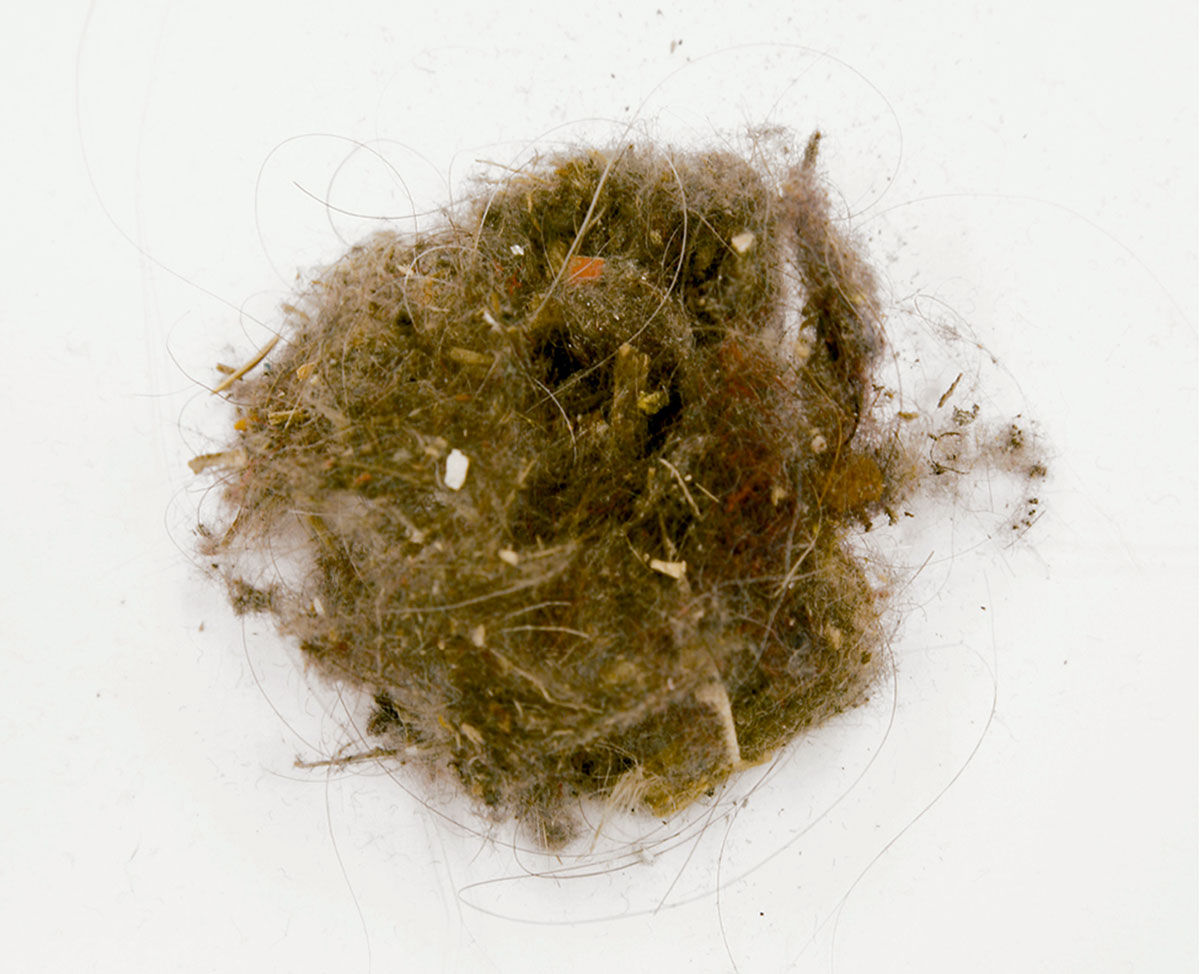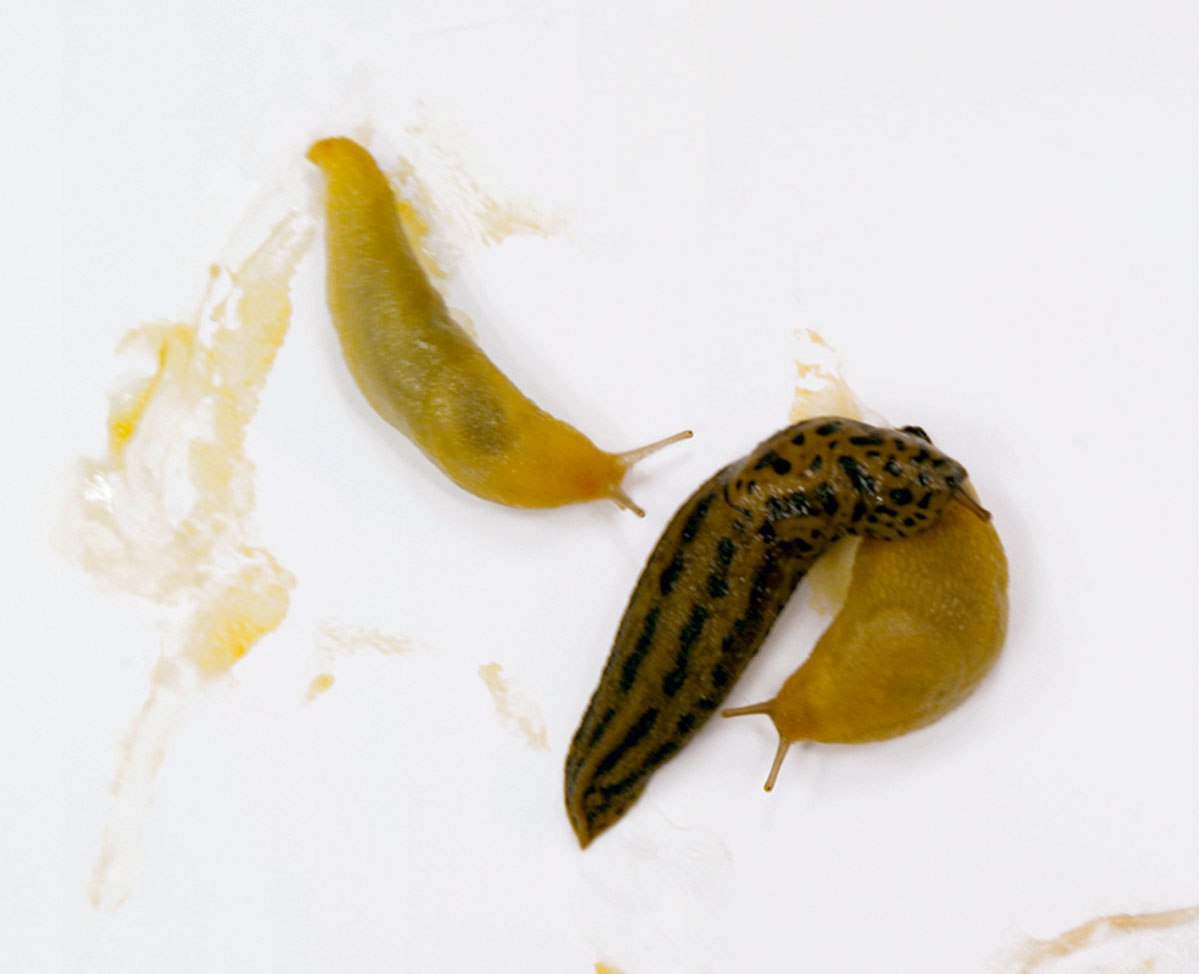The Dusty, the Sticky, and the Greasy
Christian Enzensberger’s filthy masterpiece
Adam Jasper
Christian Enzensberger died this year at the age of seventy-eight. I never managed to speak to him, although I would have liked to. I wrote him a letter a few years ago, but it was returned to sender, unopened. Perhaps he was past getting fan mail. It was a belated thank you for a book that I had found years before. Fly-specked and yellowed, it was wedged into a shelf in a secondhand bookstore with flickering fluorescent lights—a place where the actively antisocial and the passively lonely spill coffee and dig through piles of paperbacks after the library has closed. The book, at first sight, resembled vintage pornography. The cover was stained and the pages were unevenly cut, the type cheaply set in a monospace font. It looked dog-eared, disreputable, attractive. The title of the book was Smut: An Anatomy of Dirt.
The dirty book turned out to be gripping, disturbing, articulate, and strange: a forgotten classic on the subject of filth, better than Dominique Laporte’s excellent History of Shit, perhaps even better than Mary Douglas’s Purity and Danger. Enzensberger’s Smut was originally published in 1968 and was awarded the prestigious Bremer Prize for Literature in 1970. Enzensberger refused the award. He was the first and only person to have done so.
Enzensberger himself is an enigmatic figure. The two pictures of him from the Smut period (one published in Der Spiegel in 1969 and the other on the dust jacket of the 1972 edition) bear no physical resemblance to each other. The earlier one is of a thin, bespectacled young man with an eager air; the image from three years later is of a rather ugly bear-like figure with a Teutonic moustache and tousled hair. Each photo makes the other untrustworthy. The blurb tells me he was born in 1931 in Nuremberg. Wikipedia informs me that he is the “younger brother of the literary celebrity and political figure Hans Magnus Enzensberger.” Christian is the other Enzensberger. There is virtually no more information available about him in English: a few marginal scholarly citations, but no monographs, no critical essays. A Java application on an internet bookseller’s site automatically calculates that people likely to buy books by him are also likely to buy books by J. V. Eichendorff and Karl Phillip Morritz. On the same site, there is a one-line review of the book: “Smut is a rockin book.” The author of the review is “Dude.” Nothing more. No one is interested in Christian Enzensberger. So much the better. This leaves us only the book.
Smut is composed from paragraphs, shards of text that can be as long as three pages and as short as a line. The fragments range from description to monologues, from aphorisms to short excerpts from scientific monographs. The style is characterized by its lack of consistency. Smut shifts tenses and registers unpredictably, moves without cues. Moments from a formal lecture are interspersed with memories. The text is full of voices—from Beckett, Marx, and Mary Douglas to anonymous pronouns: he, she, they. And yet, arguably because there is no clear authorial voice or intent, Enzensberger is able to cover, mention, or point to every significant theme in the history of defilement.
Enzensberger starts with people as the originators of all filth when he states:
There are twenty-five forms of excretion known to man: each one a source of curiosity and pleasure. They are frequently preceded by a feeling of tense expectancy and followed inevitably by contentment. They appear as part of the individual, he welcomes them as his own. But this love is short-lived. Is it still me (their creator is soon asking himself) or is it not, is it still mine, or already an object like anything else? I am not sure, I don’t like it, I want to disown it, it was never mine, away with all this horrid confusion! The fact is, man enjoys excreting.I’ve tried to calculate the constituents of Enzensberger’s twenty-five forms of excrement. I have no idea how he produces so many distinct types in his list. That the total is so much in excess of the number of orifices in the human body cannot be accidental. Enzensberger doesn’t privilege any orifice. The implication must be that no complete list, no perfect categorization of filth, is possible, not even at its home on the margins of the human body. That is because anything that approaches or crosses these margins is dirt:
Dirt is anything which threatens the proper separateness of the individual, his anxiously guarded isolation; which is why he is unwilling to let anything approach him or escape from him. Apart from the dirt produced by contact and excretion, he also avoids anything that belongs to him only equivocally, and by analogy has a horror of intermingling.Enzensberger’s point is profound. This is the clearest single expression of the idea that anything that wishes to cross the skin of the human body is dirty. This is an obvious observation only after it has been made.



Let us return to Enzensberger, the genius of filth: “The fact is, man enjoys excreting. Then he rejects his own handiwork.” And over on the next page: “Man’s twenty-sixth excretion is himself.” This terrifying statement is literally true. We are excretions of ourselves. The brain and the nervous system are, in terms of their fetal development, the excretions of the spinal chord. In our first weeks of development we are simple chordates. Evolutionary history is recapitulated in the development undergone by the fetus from flatworm through fish and pig to primate. People are their own excretions in that they consist of the leftovers of their own actions. In Enzensberger’s ontology of filth, we are residue, the leftovers of all our previous hopes, ambitions, and projects, all of our actions, all our in-order-tos and for-the-sake-ofs.
Although dirt needs skin to become itself, dirt is still stuff with independent material qualities. It is clear that certain properties can make inanimate matter peculiarly threatening, particularly vile in the right context. These are all properties that enhance the ability of the substance to approach our margins, or worse still, cross them. Truly dirty substances seem animated by a desire to touch. Three great classes emerge immediately upon inspection—the dusty, the sticky, and the greasy. The dusty forms a category because dust covers and conceals:
Examples, by all means. Among dry things ashes and hair, the parings peelings shreds shivers from bottles shears skins, when mixed, as in garbage; also everything granular and crumbly, anything that crunches crushes splits splinters in a rotten spongy friable fibrous fashion, or like powder chalk soot drifts settles accumulates and sticks.
Dust indicates that something has remained unused or neglected for a long time, and when moved, dust forms clouds that choke. Furthermore, dust itself consists of objects that have long since lost their identity. Things that have dried out, decomposed, powdered, and shifted in a way that makes their true identities indiscernible. The dusty, however, is a minor category compared to the sticky and slimy:
Besides the countless nameless forms of slime from eggs snails mushrooms membranes jellyfish nodules mouths nostrils lips tubes stems glands fruits noses and together with them everything that gushes spurts oozes drivels drips trickles and drops. Right. Close to these come on the one hand things that stick cling make threads, honey cheese tar glue mucilage syrup pitch and varnish.The sticky is a fluid animated by desire; it seems to want to hold on to the skin, to resist being removed. It clings, becomes entrenched, is difficult to eradicate. However its stickiness—its solidarity—is the one thing that allows it to be contained. A sticky substance can sometimes be removed simply by rolling it against itself. But the sticky pales in interest when compared with the virulence of grease:
Let us come back to grease. Grease also clings; not however by suction but as a film. Confronted with it, any surface, including the skin, succumbs to it; bloom down or velvet, it all turns into grease. Water runs off it, wiping only spreads it further, the thinnest coating will divide in two again, it increases as it pleases. Once I am greasy I am cut off, I cannot get along any more, I lose my footing, slip, cannot regain control. Because I no longer possess anything, everything is possessed by the grease, and each time in desperation I try to assure myself of my former possessions I merely put the seal of this new master upon them: I am lost.
The empire of grease is infinite. Grease is always happiest when spreading out in vast two-dimensional sheets. A thimble of grease dropped into a swimming pool will spread thin until the entire surface of the water is covered. Grease will, in fact, continue to spread until it is a film only one molecule thick. As such, it forms another membrane, another skin, sealing off its victim from the world. In contact with skin, grease curses us with a variation of the Midas touch. Everything we grasp becomes greasy. Everything we touch turns to shit.
We would prefer to leave Freud out of this, but we can’t. Freud always equated gold with shit: “Feces—money—gift—baby—penis are treated [in the unconscious] as though they meant the same thing,” he wrote in “Anxiety and Instinctual Life.” And the Emperor Vespasian, on introducing a tax upon urine, encountered the objections of his son, Titus, who found the commerce in excrement disgusting. After a year, the Emperor held up a gold coin to his son’s nose, and asked him what smelled, giving rise to the expression pecunia non olet (“money doesn’t stink”). Is the story of Midas’s touch the primal myth that connects the two? Midas is the Oedipus of the anus. There is a hidden promise of power in shit that the dictator Vespasian, the inheritor of the secret of the Midas myth, has learned to exploit.
Smut is, in the end, a book not so much about dirt as about politics. Enzensberger treats capitalism as having the same power as the dictator does in reducing his subjects to filth. The mechanism is dependent on the nature of the commodity. The perfect commodity is notable for “its sameness, its aseptic cleanness, its neat seductive packaging.” One of the characteristics of this aseptic cleanness is that a perfect commodity has never been touched by human hands. Dirty finger marks are an indication that an object is secondhand. Customers in supermarkets reject the first containers of laundry soap, or milk, in a stack and reach back into the depths of shelves to take items that are less likely to have been prodded or stroked, objects that are somehow fresher. Ideally, consumer goods are protected by brightly colored boxes that are in turn shrink-wrapped, covered in protective plastic. Once the seals for our protection are broken, the plastic torn off, the box opened, we can no longer exchange the goods. It has been used up at the moment that it has been touched.
The agents of this touching are humans. We are the new filth. The logic of marginal violation is inexorable. That which desires to touch, which clings and makes its mark, is filth. The source of this filth is the abject. In a commodity economy, people are the new abjection.
The path of defense for the individual afraid of being marked out as filth is to attempt to imitate the commodity in every respect possible. We carry this out through an impeccable display of concern for our exterior appearance, and through conformity with our peers, whoever they might be. The apparent variety of subcultures and fashions might seem to argue against this, but then the same superficial variety is displayed in a supermarket aisle where a dozen separate brands of washing powder are for sale, all of them more or less identical in content. In the same way, we choose to conform as closely as possible to our individual, chosen subculture.
Contact with the object, once it is no longer a commodity but violated, is a form of contact with other people, and therefore defiles us. This pollution increases as the history of contact that the commodity has undergone becomes more difficult to trace. Once an object is in the household garbage, touching objects that have also been touched, it is dirtier than after it was opened. After this garbage is mixed with the trash of the city in the back of a garbage truck, our original object is more untouchable still. The only way of freeing ourselves of it is through burying it or burning it. Enormous cities of garbage stretch out in landfills outside our cities. The desperate drive for cleanliness, with the mass consumer engorgement that accompanies it, leaves us more polluted and defiled then ever before. Civilization is garbage. We are filth. Our commodities cry out to be rescued from us. What would their messiah look like?
Commodities, by transforming us into filth, by residing in timelessness, have turned us into corpses that rot while still alive. In so doing, they have fulfilled the old prophecy of an experience so nauseating that we can no longer thrust away the abject, but are ourselves expelled by it. We jump out of our skins.
Adam Jasper recently completed a dissertation on minor aesthetic categories. He is a contributor to Frieze, Art Review, and Art & Australia, among others.